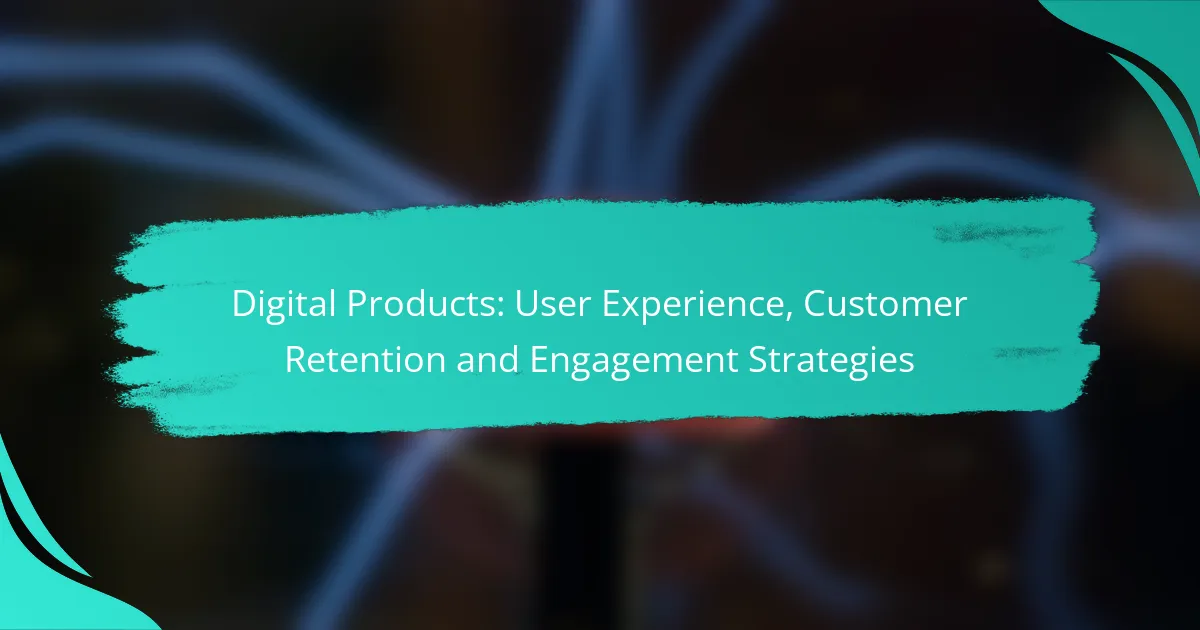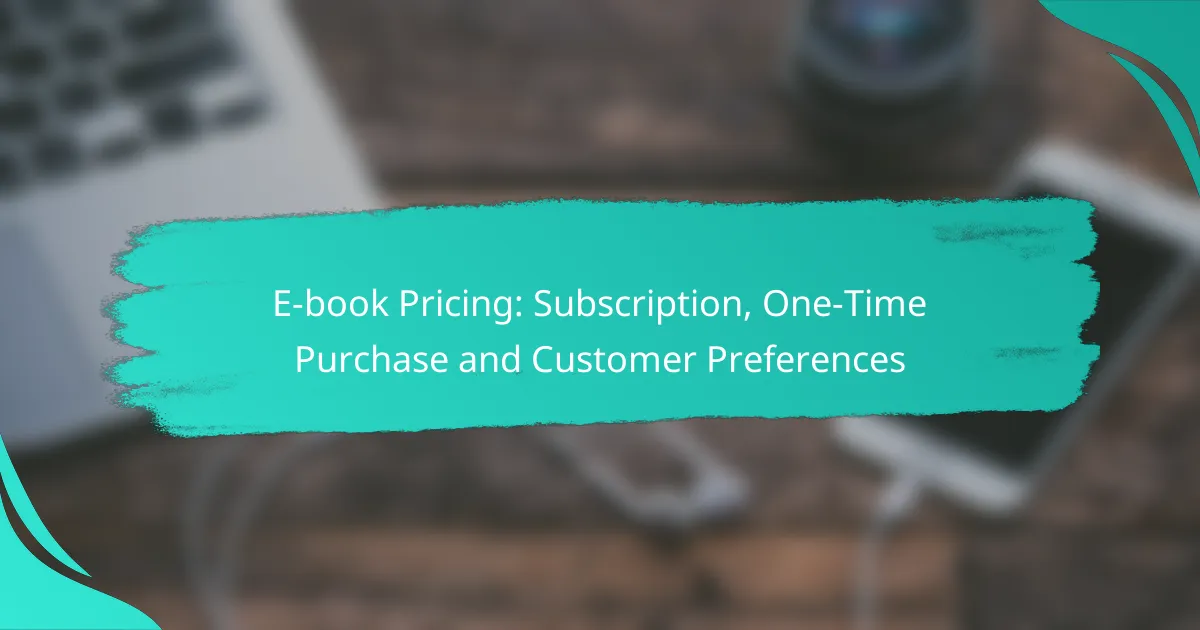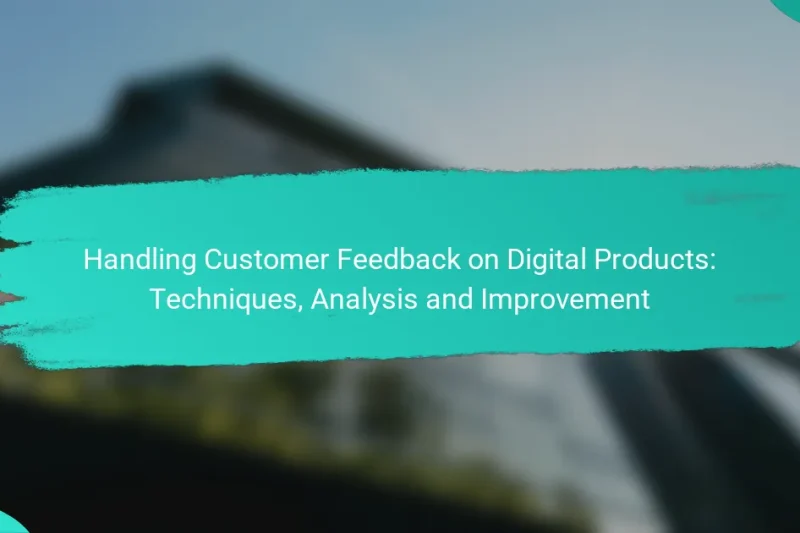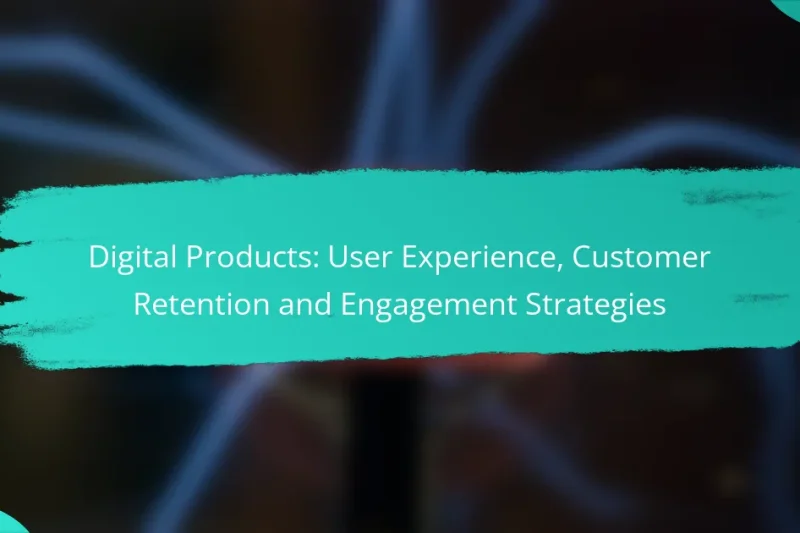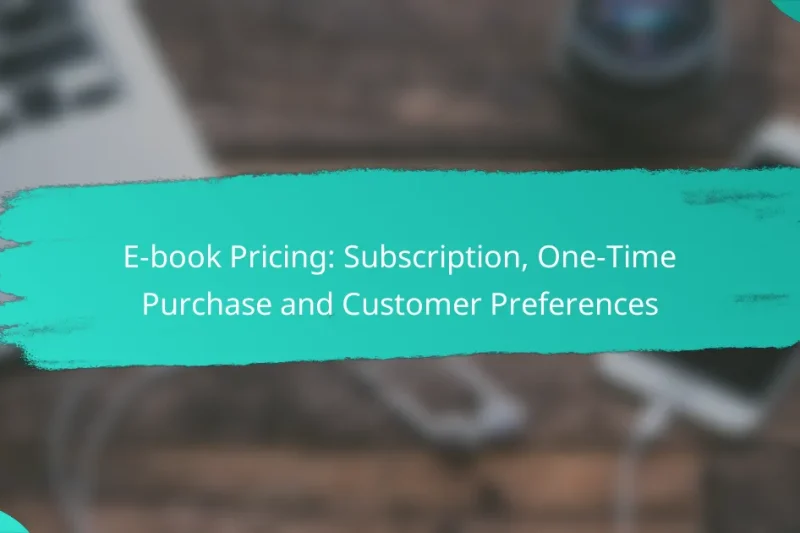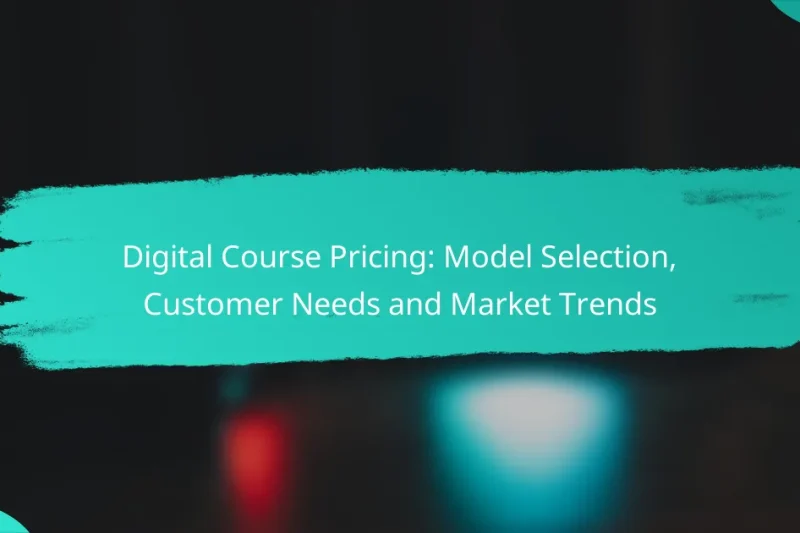Interactive digital templates are revolutionizing the way businesses and individuals create and engage with digital content. … Interactive Digital Templates: Benefits, Adoption and User ExperienceRead more
Digital Products Mastery equips entrepreneurs with the knowledge and tools to create and market successful online offerings. From online courses to SaaS solutions, this guide explores the best digital products, essential creation steps, and effective pricing strategies to maximize revenue and customer engagement.
Digital Learning Resources: Quality Certifications, Standards and Accreditation
Digital learning resources play a crucial role in enhancing skills and credibility within the education technology … Digital Learning Resources: Quality Certifications, Standards and AccreditationRead more
Handling Customer Feedback on Digital Products: Techniques, Analysis and Improvement
Handling customer feedback on digital products is crucial for understanding user experiences and improving overall satisfaction. … Handling Customer Feedback on Digital Products: Techniques, Analysis and ImprovementRead more
Digital Products: User Experience, Customer Retention and Engagement Strategies
In today’s digital landscape, enhancing user experience is crucial for the success of digital products. By … Digital Products: User Experience, Customer Retention and Engagement StrategiesRead more
E-book Pricing: Subscription, One-Time Purchase and Customer Preferences
E-book pricing models, including subscription and one-time purchase options, play a crucial role in how readers … E-book Pricing: Subscription, One-Time Purchase and Customer PreferencesRead more
Digital Products: User Experience, Device Compatibility and E-book Formats
In the realm of digital products, enhancing user experience is crucial for ensuring intuitive and accessible … Digital Products: User Experience, Device Compatibility and E-book FormatsRead more
Digital Products: Quality Standards, Compliance and Educational Impact
In the realm of education, quality standards for digital products play a crucial role in ensuring … Digital Products: Quality Standards, Compliance and Educational ImpactRead more
Digital Course Pricing: Model Selection, Customer Needs and Market Trends
In the evolving landscape of online education, selecting the right pricing model for digital courses is … Digital Course Pricing: Model Selection, Customer Needs and Market TrendsRead more
Brand Identity: Positioning, Design and Messaging for Digital Products
Creating a strong brand identity for digital products requires a strategic focus on positioning, design, and … Brand Identity: Positioning, Design and Messaging for Digital ProductsRead more
Digital Templates: Quality Assessment, Business Applications and Design Standards
Digital templates play a crucial role in enhancing productivity and streamlining business processes. By evaluating their … Digital Templates: Quality Assessment, Business Applications and Design StandardsRead more
What are the best digital products for entrepreneurs?
The best digital products for entrepreneurs include online courses, e-books, membership sites, and Software as a Service (SaaS). Each of these options offers unique advantages and can generate revenue while providing value to customers.
Online courses
Online courses are structured educational programs delivered via the internet, often featuring video lectures, quizzes, and interactive content. They can cover a wide range of topics, from business skills to personal development, and can be sold on platforms like Udemy or Teachable.
When creating an online course, consider your target audience and the specific skills they want to learn. Pricing can vary, but many courses are priced between $50 and $500, depending on the depth and length of the content.
E-books
E-books are digital books that can be easily distributed and read on various devices. They are a popular choice for entrepreneurs looking to share knowledge or expertise in a specific area. E-books can be sold directly through personal websites or platforms like Amazon Kindle.
To create a successful e-book, focus on a niche topic that addresses a common problem or interest. Pricing typically ranges from $5 to $30, depending on the content and perceived value.
Membership sites
Membership sites provide exclusive content, resources, or community access to subscribers who pay a recurring fee. This model fosters a loyal customer base and can generate steady income for entrepreneurs. Content may include articles, videos, forums, or live Q&A sessions.
When setting up a membership site, consider offering tiered pricing options to cater to different budgets. Monthly fees can range from $10 to $100, depending on the value provided and the target audience.
Software as a Service (SaaS)
SaaS products are cloud-based applications that users access via the internet, often through a subscription model. This approach allows entrepreneurs to offer software solutions without the need for customers to install or maintain the software themselves.
When developing a SaaS product, identify a specific problem your software will solve. Pricing models can vary, with monthly subscriptions typically ranging from $10 to several hundred dollars, depending on the features and target market.
How to create a digital product?
Creating a digital product involves several key steps, from identifying your target audience to launching and marketing your offering. A well-structured approach ensures that your product meets market needs and stands out in a competitive landscape.
Identify target audience
Understanding your target audience is crucial for creating a successful digital product. Start by defining demographics such as age, gender, location, and interests. Conduct surveys or interviews to gather insights about their needs and preferences.
Utilize tools like Google Analytics or social media insights to analyze user behavior. This data can help you tailor your product features and marketing strategies effectively.
Choose the right format
Selecting the appropriate format for your digital product is essential. Common formats include eBooks, online courses, software applications, or subscription services. Consider what format aligns best with your audience's preferences and learning styles.
For example, if your audience prefers interactive learning, an online course with video content may be ideal. Conversely, if they enjoy reading, an eBook could be more suitable.
Develop content
Content development is the backbone of your digital product. Ensure that the content is engaging, informative, and valuable to your audience. Use a clear structure, with headings and bullet points to enhance readability.
Incorporate visuals, such as images or infographics, to complement the text and keep users engaged. Regularly update your content to maintain relevance and accuracy.
Launch and market
Launching your digital product requires a strategic marketing plan. Start by creating a buzz through social media, email newsletters, and online communities. Consider offering early access or discounts to incentivize initial users.
Utilize platforms like Facebook Ads or Google Ads to reach a broader audience. Monitor your marketing efforts and adjust strategies based on performance metrics to maximize reach and engagement.
What are the pricing strategies for digital products?
Pricing strategies for digital products can significantly impact sales and customer acquisition. Common approaches include freemium models, one-time payments, and subscription models, each with its own advantages and considerations.
Freemium model
The freemium model offers basic features for free while charging for premium features or services. This strategy attracts a large user base quickly, as customers can try the product without any financial commitment.
However, converting free users to paying customers can be challenging. It's essential to provide compelling premium features that encourage upgrades, such as advanced functionalities or enhanced support.
One-time payment
A one-time payment model requires customers to pay a single fee to access the product indefinitely. This straightforward approach is often preferred for software applications, e-books, or online courses.
While it provides immediate revenue, it can limit long-term income potential. Consider offering updates or add-ons to maintain customer engagement and encourage repeat purchases.
Subscription model
The subscription model charges customers a recurring fee, typically monthly or annually, for continued access to the product. This strategy can create a steady revenue stream and foster customer loyalty.
It's crucial to offer ongoing value through regular updates, new content, or exclusive features to retain subscribers. Be mindful of pricing; competitive rates can enhance retention, while high costs may lead to cancellations.
What tools are essential for digital product creation?
Essential tools for digital product creation include design software, course platforms, and e-commerce solutions. These tools streamline the process of developing, marketing, and selling digital products, making it easier for creators to focus on content and customer engagement.
Canva for design
Canva is a user-friendly graphic design tool that allows creators to design visually appealing digital products without needing advanced design skills. It offers a wide range of templates, images, and fonts, making it suitable for everything from eBooks to social media graphics.
When using Canva, consider the dimensions and formats required for your specific product. For instance, eBook covers typically require a 1600 x 2560 pixels resolution. Always ensure that your designs are consistent with your brand identity to enhance recognition.
Teachable for courses
Teachable is a popular platform for creating and selling online courses. It provides an intuitive interface for course creation, allowing you to upload videos, create quizzes, and manage student interactions effectively. This platform is ideal for educators looking to monetize their expertise.
When setting up a course on Teachable, focus on structuring your content into modules and lessons for better learner engagement. Pricing your course competitively is crucial; consider starting with a price range of $29 to $199, depending on the depth and value of the content offered.
Shopify for e-commerce
Shopify is a leading e-commerce platform that enables creators to set up online stores for selling digital products. It offers various features, including payment processing, inventory management, and customizable storefronts, making it easy to launch and manage an online business.
When using Shopify, pay attention to the pricing plans, which range from $29 to $299 per month, depending on the features you need. Additionally, ensure that your product descriptions are clear and compelling to improve conversion rates. Consider integrating marketing tools to drive traffic to your store effectively.
What are the common challenges in digital product marketing?
Digital product marketing faces several challenges that can hinder success. Key issues include market saturation, customer acquisition costs, and maintaining engagement over time.
Market Saturation
Market saturation occurs when the number of available digital products exceeds consumer demand. This makes it difficult for new products to stand out and gain traction. To combat this, focus on unique value propositions and niche targeting.
Consider conducting thorough market research to identify gaps in the market. Tailoring your product to meet specific needs can help differentiate it from competitors.
Customer Acquisition Costs
High customer acquisition costs (CAC) can significantly impact profitability in digital product marketing. These costs can vary widely, often ranging from low tens to hundreds of dollars depending on the strategy employed.
To reduce CAC, leverage organic marketing strategies such as content marketing and social media engagement. Building a strong brand presence can lead to lower costs over time as word-of-mouth and referrals increase.
Maintaining Engagement
Keeping customers engaged with digital products is crucial for long-term success. Many users may lose interest after initial use, leading to high churn rates.
Implement strategies such as regular updates, personalized content, and loyalty programs to encourage ongoing interaction. Utilizing feedback loops can help you understand user needs and adapt your offerings accordingly.



